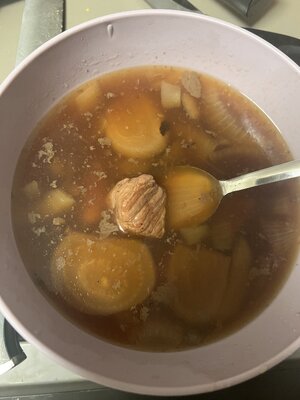


I thought this was kind of interesting....,

 wagyu.org
wagyu.org
Not only is it a gastronomic delight, but it’s healthy for you too. Health experts have discovered the mono-unsaturated to saturated fat ratio is higher in Wagyu than in other beef. And the saturated fat contained in Wagyu is different, forty percent is in a version called stearic acid, which is regarded as having a minimal impact in raising cholesterol levels. The profile of marbled Wagyu beef is more beneficial and healthier to human health.
Wagyu is also higher in a type of fatty acid called conjugated linoleic acid (CLA). Wagyu beef contain the highest amount of CLA per gram of any foodstuff – about 30% more than other beef breeds – due to higher linoleic acid levels. Foods that are naturally high in CLA have fewer negative health effects.
-------------------------------------------------------------------------------------------------------------------------------
There's a 17 minute video about Wagyu at the link

What Is Wagyu Beef
Wagyu, the finest beef there is. Find how to become a member, education, and resources for members here.
Not only is it a gastronomic delight, but it’s healthy for you too. Health experts have discovered the mono-unsaturated to saturated fat ratio is higher in Wagyu than in other beef. And the saturated fat contained in Wagyu is different, forty percent is in a version called stearic acid, which is regarded as having a minimal impact in raising cholesterol levels. The profile of marbled Wagyu beef is more beneficial and healthier to human health.
Wagyu is also higher in a type of fatty acid called conjugated linoleic acid (CLA). Wagyu beef contain the highest amount of CLA per gram of any foodstuff – about 30% more than other beef breeds – due to higher linoleic acid levels. Foods that are naturally high in CLA have fewer negative health effects.
-------------------------------------------------------------------------------------------------------------------------------
There's a 17 minute video about Wagyu at the link







